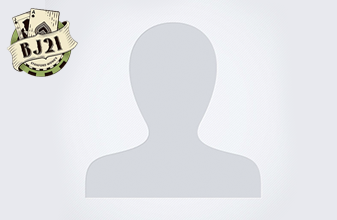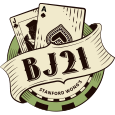I know that it is correct basic strategy to hit A,7 versus dealer 10 or 9. But is it also correct to hit A,2,2,3 versus 10 or 9? I've had other players tell me to stop hitting a 3 card soft 18. Thanks.


I know that it is correct basic strategy to hit A,7 versus dealer 10 or 9. But is it also correct to hit A,2,2,3 versus 10 or 9? I've had other players tell me to stop hitting a 3 card soft 18. Thanks.

If the count says it is correct to hit it, then hit it. I don't know the Wong Hi-Low index for the play, but it is a BS play.
At best there may be some composition dependent strategy that would recommend standing on that play. However count strategies take precedence over composition plays.
Incidentally, I have had players tell me not to hit my twelve to the dealer 2. i.e. "players" don't know sh#t.
P.S. Stainless Steel Rat, I included the Wong prefix to Hi-Low just for you.

Soft 18 vs dealer 9 and 10 is not in I18 list. If there are an index numbers to indicate Stand, they must be really very, very high or there might be no index numbers at all. So I think Hit is always the way to go. How many cards to reach soft 18 doesn't matter. Interested to know if anybody can get the index numbers for these situations.

"Soft 18 vs dealer 9 and 10 is not in I18 list."
It wouldn't be on an I118 list, either!! :-)
"If there are an index numbers to indicate Stand, they must be really very, very high or there might be no index numbers at all."
None at all. It makes no sense to stand. There's no logic to it. This isn't a case of avoiding busting and hoping for a low card for the dealer in the hole. You have a hand that can't break by hitting. With extremely high counts, you mmay very well get a 10, but if you're using an ace-reckoned count, you might also get an ace, and there's always a chance of catching a 2 or 3. The dealer, of course, will also have a good shot at a 10 in the hole, to beat your 18 with his 19 or 20, if you stand, so there simply is no logic -- or any count -- for which standing would make any sense.
"So I think Hit is always the way to go. How many cards to reach soft 18 doesn't matter."
Right.
"Interested to know if anybody can get the index numbers for these situations."
See above. There shouldn't be any index for them.
Don

for a S17 game, hit A7 vs 9 or 10 always. If the dealer has an A up, you stand if the TC is +1 or higher, you hit if it is less than +1.
For a H17 game, you always hit A7 vs 9, 10 or A.
Also note that for all BS plays A7 is the same as A222A, or any case where you have an A plus other cards that add up to a total of 7. The only time this fails is for double-downs where you can't double on more than 2 cards...
Hope that helps.
Note that this index can be found if you have CVBJ or CVCX/CVData, or if you have Wong's Pro BJ.


Don wrote: None at all. It makes no sense to stand. There's no logic to it. This isn't a case of avoiding busting and hoping for a low card for the dealer in the hole. You have a hand that can't break by hitting.
Actually you can (and should break often) when hitting your soft 18 against the dealer's 10. It amazes me when players hit their soft 18 and get a 6 and then stand on their hard 14 because they are afraid of busting. I don't know the numbers, but I suspect that you are better off standing on your soft 18 if you are afraid to take the second hit. Don, no defense is needed. I know that you did not mean to imply that you can't break when hitting a soft 18 multiple times as you often should.
Dr 21


Here is the EV data at BJ Math, run off by Cacarulo
http://www.bjmath.com/bjmath/ev/4ds17.htm
A,7 vs 9
Stand: -0.18235
Hit: -0.09733
Double: -0.28205
Suppose that you decided to hit, but draw only one card. This is the same as doubling, except that you don�t double your bet. The EV is one-half of the doubling EV. In this case, abut -0.14. This is still better than the -0.18 for standing.
When I hit soft 18 v 10, I seem to always draw 16, which I then stand on. I think standing on 16v10 is a counter tell. I also think hitting soft 18 Is also a counter-tell. I think the combination of the two must really look bad.
I go ahead and do it though.

For most hit-stand decisions, you can determine whether hitting is better just by looking at the third card. That is, if Hitting has better EV, then usually �Draw One Card� has better EV as well.
I would not posit this a rule, since I am sure a determined reader can find exceptions. But it works out in most cases that I am aware of.
BTW, doubling is obviously a different matter.

If your bet is $100, the cover for not hitting costs around $8.50. You could double for less (say $25) for the same EV. Now that might floor the floor.
Dr 21

Have you started on BJA4 yet ? ?

Hey, I�m kind of math freak who always tries to find the exceptions to the rule. I noticed that if 7,8,9 cards are in high numbers in the remaining deck, (which doesn�t affect the count in HiLo counting system) there are situations where Stand is the optimal playing option.
Game rule: S17, DAS, DOA, Split x 3.
Card composition: [A] = 8, [2] = 7, [3] = 7, [4] = 7, [5] = 7, [6] = 7, [7] = 11; [8] = 11; [9]=11;[10] = 32
Hit: Win ... 37.57% Lose ... 62.43%
Stand Win ... 37.79% Lose ... 62.21%
Stand is a better option. Sorry, I use my old CA program which considers even hands as half Win and half Lose.
Your statement is 100% correct when applying to HiLo counting system and most likely 100% correct in other level 1 counting systems. It may not be 100% correct in some advanced counting systems. This is the example which shows some deficiencies in certain counting systems.
I changed the subject to no count in standing instead of no logic in standing. :-)
Bj21 uses cookies, this enables us to provide you with a personalised experience. More info

